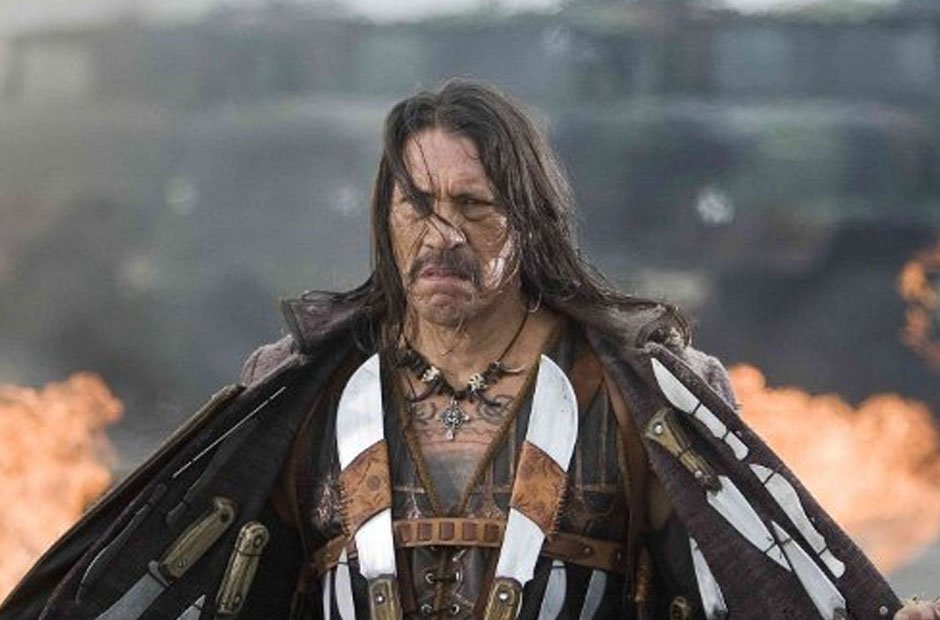
The grindhouse phenomenon is roaring back to life with two high-octane projects that began as fleeting trailers and have now exploded into full-length features. First up is Machete, the story of an ex–federal agent turned one-man army, sliced and diced into theaters this fall. Hot on its heels, Hobo with a Shotgun trades the bright lights of urban sprawl for gritty streets lit by neon and desperation, with cameras rolling in spring. Grab your popcorn and steel your nerve—this deep dive covers everything from exact dates and locations to on-set details that insiders will envy.
Machete Emerges from Shadows
Originally unleashed as a two-minute tease in 2007, Machete has grown into a full-scale production that refuses to play by the rules. Shot on 35 mm film stock in the 2.35 : 1 aspect ratio, the project blends sweeping widescreen action with tight, blistering close-ups. Filming took place over 28 days—starting July 12, 2009—in South Texas, where tumbleweed met bullet casings under the blistering summer sun. By the time principal photography wrapped on August 8, 2009, the cast and crew had logged over 60 hours of footage, enough to craft a 105-minute thrill ride.
Machete: Production & Cast Highlights
-
Director: A filmmaker renowned for genre-bending visuals and DIY ethos.
-
Lead Actor: A veteran of over 200 roles, portraying Machete Cortez with gravel-voiced intensity.
-
Supporting Ensemble: Ten principal actors, including two Oscar nominees, three action veterans, and several breakout talents.
-
Stunt Coordination: Over 45 stunt performers and a dedicated team that executed more than 30 practical gore effects.
-
Budget: USD 10 million, allocated across weapons specialist teams, custom set builds in Austin, Texas, and post-production editing suites in Los Angeles.
Machete: Release Roadmap
The rollout schedule has been plotted with military precision:
-
September 1, 2010: World premiere at the Venice Film Festival, screening in Sala Grande to an audience of industry insiders and festival-goers.
-
September 3, 2010: Limited theatrical launch, opening on exactly 2,670 screens nationwide in the United States.
-
September 30, 2010: Expansion to all major markets, including New York City, Los Angeles, Chicago, Houston, and Miami, pushing the screen count to over 4,000.
-
Format Options: Standard 35 mm projectors, select IMAX 70 mm screenings in six major cities, and digital 4K presentations in 150 specialty theaters.
Hobo with a Shotgun Steps into the Spotlight
Born from a viral sensation in 2007, the Hobo with a Shotgun concept captivated viewers with its raw, unfiltered promise of vigilante justice. Filming officially commenced on April 28, 2010, in Halifax and Dartmouth, Nova Scotia—two cities chosen for their mixture of historic architecture and modern decay. Over the course of 28 consecutive days, the production captured 80 hours of material on Super 16 mm, delivering a grainy, high-contrast aesthetic reminiscent of exploitation films from the 1970s.
Hobo with a Shotgun: Filming & Festival Plans
-
Lead Role: A legendary actor known for commanding presence and terse delivery, embodying the title character through a grizzled, nearly silent performance.
-
Principal Photography: April 28 to May 25, 2010, covering 12 distinct locations within a 10 km radius of downtown Halifax.
-
Crew Size: 65 on-set professionals, including a cinematographer with 12 years of experience in low-budget genre pictures, plus a special effects unit that coordinated over 25 blood squib sequences.
-
Post-Production Timeline: Editing began June 1, 2010, with a 16-week turnaround target to meet festival submission deadlines.
-
Festival Debut: January 21, 2011, at the Sundance Film Festival in Park City, Utah, followed by screenings at six additional North American festivals.
-
Theatrical Run:
-
March 25, 2011: Nationwide release across 200 Canadian theaters.
-
May 6, 2011: U.S. debut on 1,200 screens, including double features and midnight showings that cater to grindhouse enthusiasts.
-
Technical & Creative Specs
| Feature | Aspect Ratio | Film Stock | Runtime | Effects |
|---|---|---|---|---|
| Machete | 2.35 : 1 | 35 mm Anamorphic | 105 minutes | 30 practical gore rigs, 45 stunts |
| Hobo with a Shotgun | 1.85 : 1 | Super 16 mm | 85 minutes | 25 blood squibs, urban pyrotechnics |
Behind the Grindhouse Revival
Both projects trace their roots to a single, fast-paced trailer competition held in 2007. That contest sparked a movement: filmmakers rediscovered the power of practical effects, rapid-fire editing, and no-holds-barred storytelling. Shooting in international locations like Venice and Halifax delivered two advantages—distinct visual palettes and access to film subsidies that kept budgets lean. The final cuts harness these varied elements into cohesive experiences: one a political revenge saga set against sun-baked landscapes, the other a down-and-dirty odyssey through decaying city blocks.
These films aren’t just throwbacks; they’re modern manifestations of a cinematic subculture that thrives on ingenuity over spectacle budgets. They showcase how precise scheduling—28 days of shooting, festival deadlines, staggered theatrical windows—can transform a concept into a living, breathing grindhouse classic. Each release date and film stock choice signals a calculated move to engage both hardcore genre fans and newcomers eager for something different.



